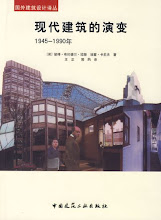My chapter 'Publoid Space in the Microcosmopolis: Two new business districts of Manchester and Salford' has been published in
CITIES IN TRANSFORMATION: RESEARCH & DESIGN
ideas, methods, techniques, tools, case studies
edited by Marco Bovati, Michele Caja, Giancarlo Floridi and Martina Landsberger
The two volume set is published by Il Poligrafo, Padua
Architecture schools are fundamental deposits of knowled-ge and abilities, which have contributed productively for a long time to the growth of studies on architecture and the city. The aim of this book is to share the results of research work carried out under the patronage of EAAE and ARCC in the main European and American architecture schools on the issue of the city and its recent transformations. Through the comparison of different points of view, the goal is to hi-ghlight the need for a broad and open discussion, appropria-te to the vastness and complexity of the problems faced. The well known sentence by Leon Battista Alberti, “The house is like a small city and the city is like a large house”, is a brief indication of the subjects of the volume: the widespre-ad phenomena of urbanization of large parts of the world, the problems of diametrically opposed so-called shrinking cities and the severity of the effects of climate change and energy issue. Architectural and urban contents are also main themes in EU policy where the crucial role of Architecture has been stressed in many documents concerning the development of European cities. These arguments are developed in a thematic interweaving that goes from architecture and city's analytical and design techniques to those connected with organization, construc-tion, security, planning, conservation and practice of a pro-fession whose role has taken on ever greater responsibility within the human destiny.
Monday 30 June 2014
Saturday 28 June 2014
Wednesday 25 June 2014
Sunday 22 June 2014
Acqua Altar
The Patriarch of Venice attempted to hold a Corpus Domini procession in Piazza San Marco today but rising waters restricted the celebration to the packed interior of the Basilica
Wednesday 18 June 2014
The morphology of the post-industrial city: the Manchester mill as 'symbolic form'
Abstract of a paper to be presented at the 'Past, Present and Future of Public Space' conference, Bologna 25-27 June 2014
The contemporary post-industrial city has developed within a system where every square metre of its area might be assessed for its economic productivity and market value. Retail space, leisure space, even public open space, as well as housing and work environments are quantifiable and comparable in financial terms as the ultimate test of their value. This conception of urban space as units of capital has its origins in the industrial development of centres such as Manchester where, largely unencumbered by earlier urban patterns, the idea of the modern city could thrive.
As a ‘shock city’ Manchester, during the peak of its industrial growth in the early nineteenth century was an object of fascination and repulsion to the visitors it attracted. Opinion and rhetoric dominated social economic and political debate but dispassionate spatial analysis was rare. In the view of contemporary authors the town had few significant public spaces, instead being largely comprised of the vast industrial structures that crowded around the roads and canals. The mills were assessed for legal and insurance purposes, however, at a time of rabid competition and the prevalence of industrial accidents. The surveys that have survived provide the first opportunities to assess these examples of new urban space. The image results of a settlement composed of a single type, the mill or warehouse. Ancillary structure, most especially the workers’ housing did not merit recording.
In these products of spatial calculation the Manchester mill can be seen to set the pattern both for the productive spaces of industry and the spatial framework of the contemporary city, where the public space is one of consumption rather than community. The supervised and privatised public space of the contemporary city finds its genius loci in the industrial typology of its commercial origins.
The contemporary post-industrial city has developed within a system where every square metre of its area might be assessed for its economic productivity and market value. Retail space, leisure space, even public open space, as well as housing and work environments are quantifiable and comparable in financial terms as the ultimate test of their value. This conception of urban space as units of capital has its origins in the industrial development of centres such as Manchester where, largely unencumbered by earlier urban patterns, the idea of the modern city could thrive.
As a ‘shock city’ Manchester, during the peak of its industrial growth in the early nineteenth century was an object of fascination and repulsion to the visitors it attracted. Opinion and rhetoric dominated social economic and political debate but dispassionate spatial analysis was rare. In the view of contemporary authors the town had few significant public spaces, instead being largely comprised of the vast industrial structures that crowded around the roads and canals. The mills were assessed for legal and insurance purposes, however, at a time of rabid competition and the prevalence of industrial accidents. The surveys that have survived provide the first opportunities to assess these examples of new urban space. The image results of a settlement composed of a single type, the mill or warehouse. Ancillary structure, most especially the workers’ housing did not merit recording.
In these products of spatial calculation the Manchester mill can be seen to set the pattern both for the productive spaces of industry and the spatial framework of the contemporary city, where the public space is one of consumption rather than community. The supervised and privatised public space of the contemporary city finds its genius loci in the industrial typology of its commercial origins.
Saturday 14 June 2014
Tuesday 10 June 2014
Sunday 8 June 2014
Subscribe to:
Posts (Atom)




































































